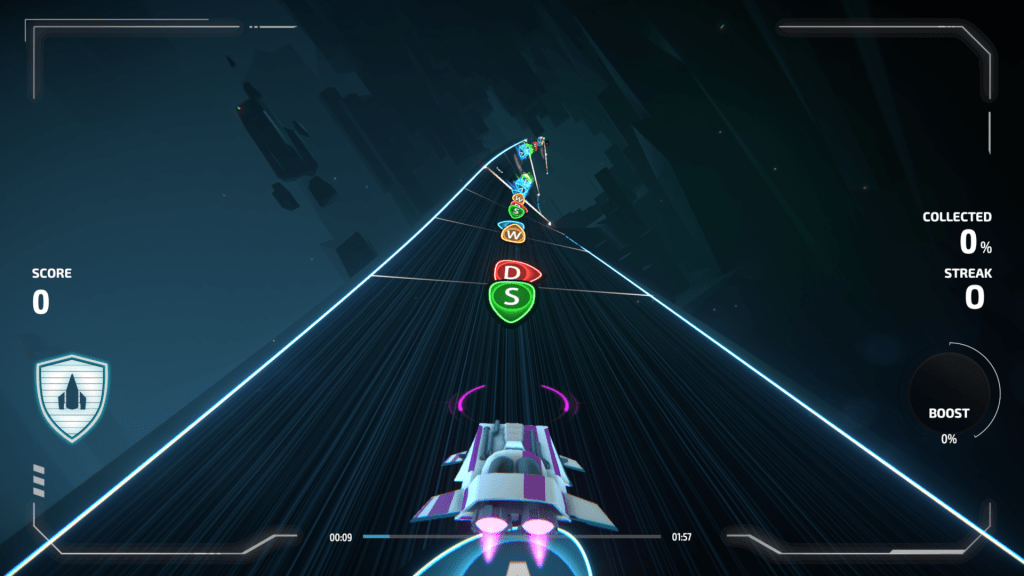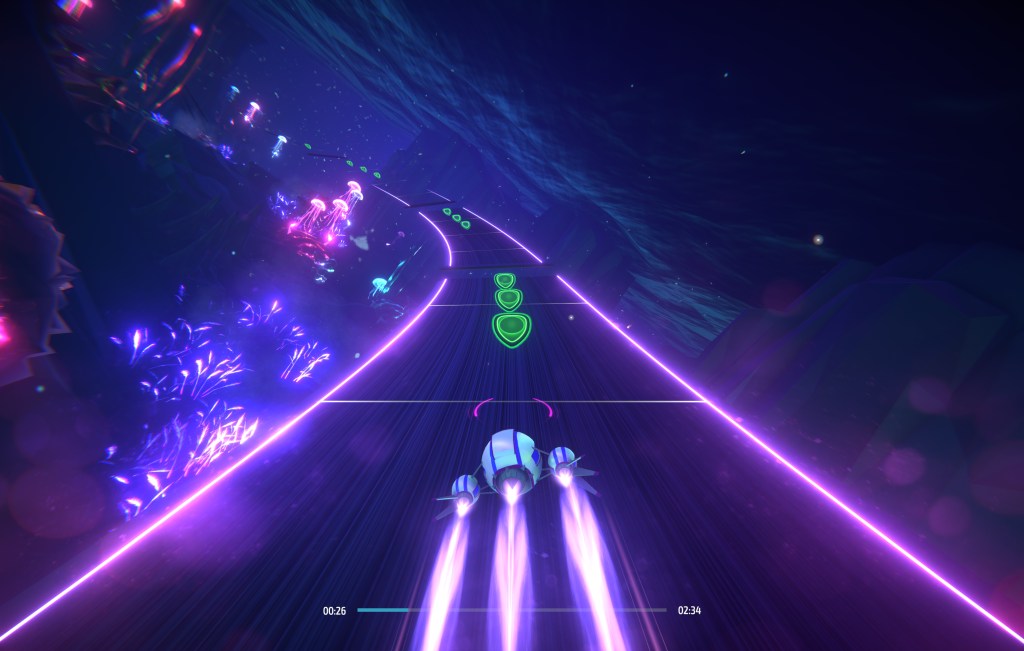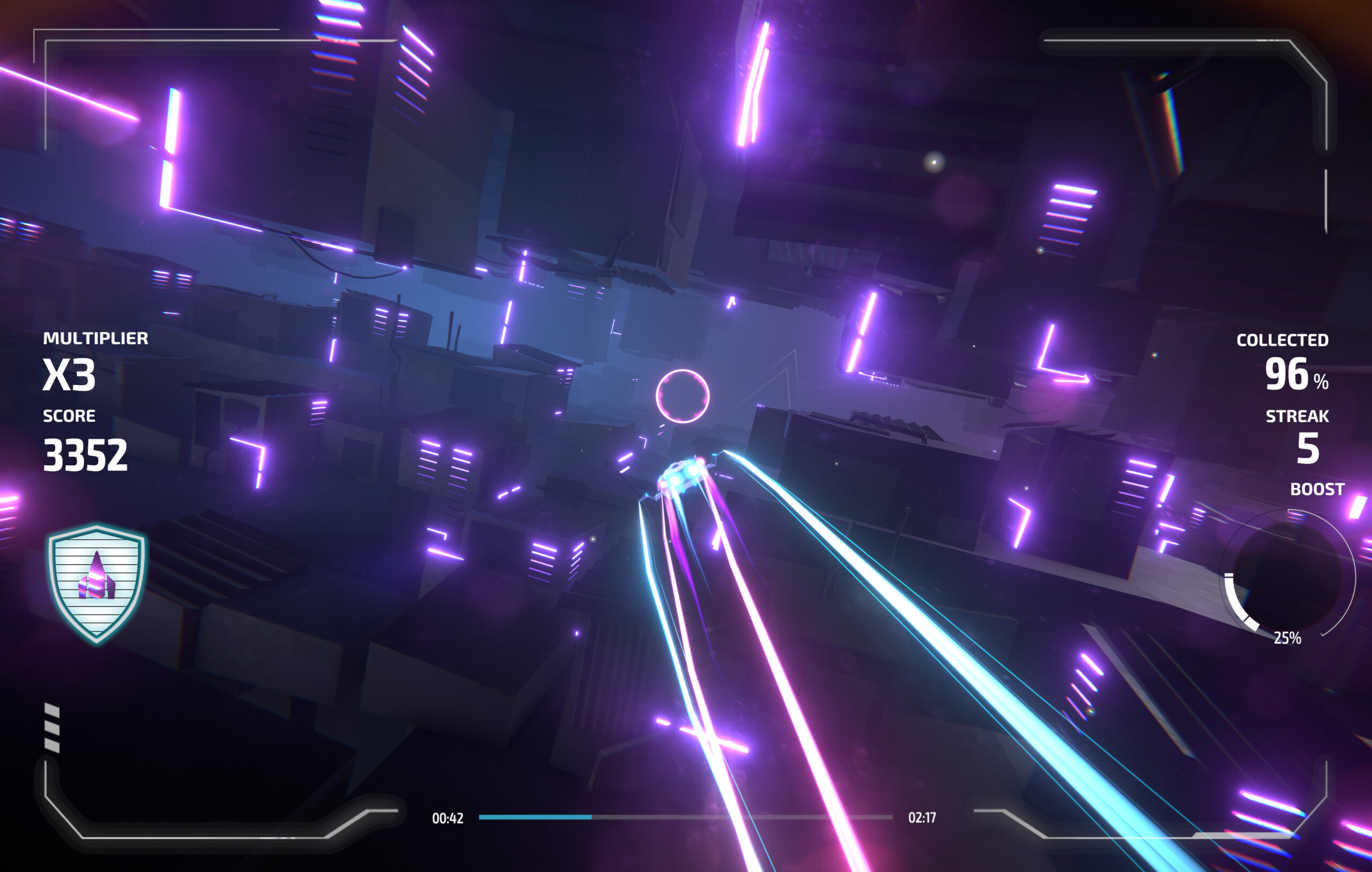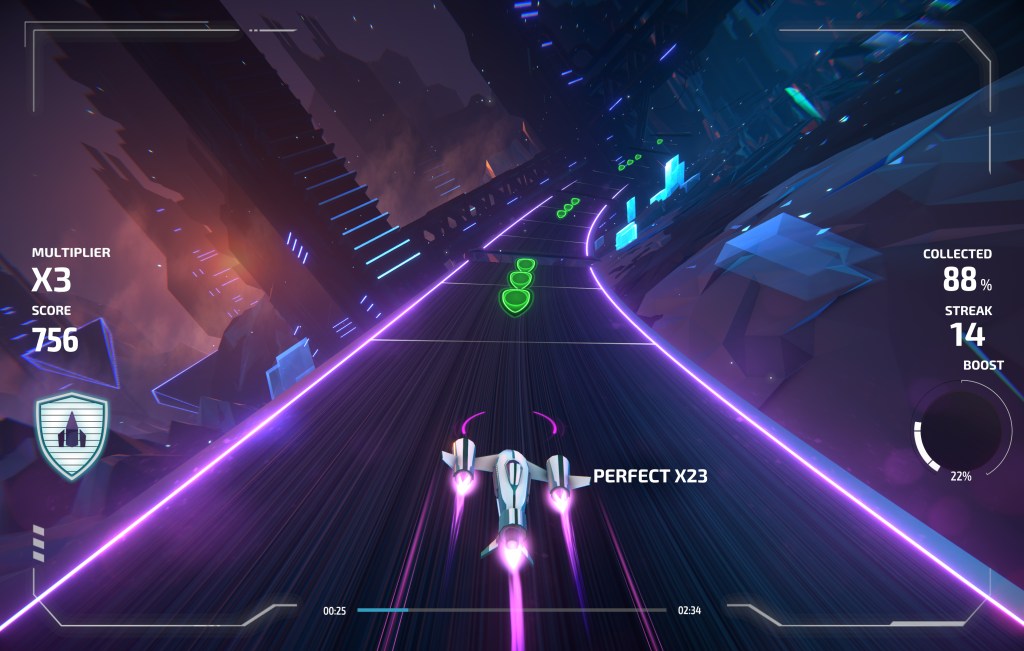Review: Invector: Rhythm Galaxy

Rhythm games are basically my lifeblood. I own more than one person probably should, invested way too much money into an arcade style controller for one of them, and occasionally slack off from work by visiting the local Round 1 arcade to play some for an hour or two.
With the state of the genre currently, this means I’m typically receiving a constant feed of Japanese and Korean pop music. So many anime openings. So much Touhou music.
So imagine my surprise when a new rhythm game drops into my lap…one that doesn’t feature a soundtrack made up of all of these Japanese tracks I’ve become intimately familiar with, as they keep showing up in different rhythm games. No, this one has something much different…something that you likely hear every day on the radio in the United States.
Developed by Hello There Games and published by Warner Music Group, Invector: Rhythm Galaxy was released on July 14th, 2023, for PC, with console versions planned for later in the year.

Story/Gameplay
Invector does include a story in a campaign mode, but the less said about it, the better. Following a group of friends flying across the galaxy reminiscing about their pasts, it is highly forgettable and adds nothing to the game. So let’s just jump right to the gameplay.
The core gameplay of Invector is relatively straight-forward: icons representing face buttons or arrows come flying down a lane at your ship, and you hit them when they hit the target icon just in front of said ship. Of course, every rhythm game needs some kind of twist, and the twist here comes in the form of movement.
Icons can show up anywhere on the lane your ship is flying on, and you have to position your ship in front of the icon in order to hit it. Arrow inputs will also move your ship when you successfully input them as well. Most notecharts flow the icons in such a way that arrow inputs will put your ship in the right place for other upcoming inputs, but that isn’t a hard and fast rule; you do have to watch for icons to appear in lanes that you’ll need to manually switch to.
Also, portions of each notechart will take the note lane into the third-dimension as well. These parts will have you flying through a triangular tunnel, where notes can appear on any of the three walls making it up, and arrow inputs rotate the entire chart around your ship.
And its these portions where I have my first main frustration with Invector: the tunnel notechart segments make notecharts near impossible to sightread.
The triangle tunnels are pretty tight, and when notes start appearing on another wall you need to switch to, you’ll only see one or two of them – the rest are hidden behind the other notes with the position of the game’s camera. If I was playing a song that I didn’t know, these moments were inevitable combo breakers as notes would start scrolling by that I wasn’t prepared for.
On the other hand, once I did have a notechart down, particularly on the highest difficulty, I was pleasantly surprised with the quality of the charting. Note sets and movements followed the track well, and I quickly found myself getting into a groove.

I did have some smaller issues with Invector that are worth mentioning. The face button note icons are shaped like arrows, presumably to help with quick identification of each face button in relation to its location on a controller. Much too often, though, I’d be paying more attention to the arrow shape than the button press on the icon, and end up doing a move input instead. Even after playing through all songs and practicing the highest difficulty, I still make this input mistake more often than not.
Secondly, there’s a third “input style” as well, next to the regular lane and the tunnel inputs – free flying through rings. During certain parts of some songs, the notechart disappears, and you have to navigate your ship to fly through rings. These parts often completely broke my groove, as they were simply boring and lazy. Sure, they’re playing during slower parts, but in most cases there was still plenty going on in the track to chart, and many tracks have slower parts charted anyways.
Finally, the timing calibration was a bit frustrating. Most rhythm games use the same method of calibration: tap along to a flashing or moving icon to calibrate visuals, and then tap along to a pulse/beat to calibrate audio. Here in Invector, the former is true, but the latter is something completely different. To calibrate audio, the game requires you to move a pulsing circle on a slider, shifting it to a point where the pulse matches an audio beat. I was only able to get the audio calibration to a “generally acceptable” point using this, and then had to spend a few songs playing part of the chart, pausing, adjusting the audio calibration number a bit, restarting the song, and repeating. Why the game couldn’t use the standard “tap to the beat” calibration for audio, I have no idea.
A point I can give to Invector is the ability to completely customize inputs. You can switch around every input for each note icon to suit your gameplay style…which I had to do almost immediately. The initial controls of the game were somewhat awkward for me, being that bass beat “line” inputs were mapped to a bumper button on my controller, which I just couldn’t wrap my head around. Remapping this to the “down” input made higher-level play much easier, though it ended up requiring some dexterous inputs at moments where I had to hold down the “down” input while also doing a left or right arrow input.
All of the above likely reads that I’m complaining hard about this game. Really, outside of the frustrations of not being able to sightread charts during the tunnel segments, most of the issues I have with the core gameplay are rather minor. Once I got used to how Invector wanted me to play it, I found myself starting to have a good time…at least, during the songs I enjoyed playing.

Music
And that’s where we get to the soundtrack. The tracks on offer in a rhythm game can make or break it, but they’re also highly subjective. And the soundtrack Invector offers really stands out…in that it’s loaded with modern pop, Top 40, and radio rock.
I’m not even trying to be sarcastic there – in a genre mostly flooded with Japanese and Korean pop, a tracklist full of contemporary Western music is an anomaly.
You can probably guess what my initial opinion of the tracklist was when I say I literally only recognized two songs: “Ain’t It Fun” by Paramore and “Boom Clap” by Charli XCX. I don’t wanna sound too hipstery, but modern radio rock and pop is completely out of my wheelhouse. Once I started going through the tracklist, though, I was surprised just how many of these songs I did actually know. Many of them I wound up recognizing from one place: TikTok.
While the soundtrack here mostly coalesces around younger pop-music fans, there’s some other…odd…inclusions. For every handful of modern pop or rap tracks, the game decides to through a curveball like “Notorious” by Duran Duran, which doesn’t feel like it fits Invector‘s target audience. There’s also some weird choices for famous artists. Linkin Park has a massive selection of hits that everyone knows, but it seems that WMG decided they’d rather promote the anniversary release of Meteora by including out-of-nowhere “new” track “Lost” instead.
Thinking over it, the tracklist is less targeting a certain audience and more WMG flexing the variety of songs they have the rights to. And flex they do, as the last thing I expected to find in this game is German rap (“Biturbo” by Zuna ft. Bausa).

Conclusion
I didn’t like Invector: Rhythm Galaxy at first. I didn’t recognize most songs by name, the controls out-of-the-box were awkward for me, and not being able to instantly jump to the highest difficult and sightread songs bruised my rhythm gamer ego.
As I put more time into it, beginning to understand how the game wanted to be played, my opinion on it brightened up. And as I got a feel for it, I began to see just how well charted the songs in this game are. The campaign mode is entirely a throwaway – play through and skip the story just to unlock songs, and then never touch it again. But after that, there’s a fairly solid rhythm experience here.
Unfortunately, the soundtrack here just isn’t for me. This is entirely subjective and doesn’t hit the score, but I personally don’t see myself going back to play more with the current music on offer. Should WMG dig deeper into their vaults for some DLC, though, I wouldn’t complain about coming back.
~ Final Score: 7/10 ~
Review copy provided by Warner Music Group for PC. Screenshots courtesy of Warner Music Group.

You must be logged in to post a comment.